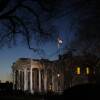Much of the national news media breathlessly anticipates Monday night’s Presidential debate, touting its impact on the election—and by extension the future of the free world—in Brobdingnagian terms. As they surely should: the debates, along with the national conventions, are the only truly communal general-election campaign events, experienced by a mass audience. That this is true precisely because of choices made by the national media outlets themselves is fascinating, but makes it no less true.
Voters themselves certainly believe in the importance of debates. Each of the past few cycles, roughly two-thirds of voters said that the three fall televised Presidential debates helped them choose a candidate.
On the other hand, voters are self-deluded.
I mean, come on. Perhaps the most consequential debates were those in 2012, when Mitt Romney completely outperformed President Barack Obama in the first debate, and Obama came back with strong performances in the final two. Those seeming game-changers turned a 49%-46% Obama lead in the Real Clear Politics average, into a brief 48%-47% Romney edge, and back to a one-point Obama lead. Obama ultimately won by four percentage points.
That’s just small movement on the edges, not two-thirds of the electorate making up its mind.
And that shouldn’t surprise us. As one study after the 2012 election found, the number of people who claim to have watched a debate is typically about double the actual cumulative measured television audience.
And, while people love to portray themselves as open-minded, in fact the vast majority know all along which way they will vote, and merely use campaign events to reinforce that decision.
That’s probably especially true of those who actually watch the debates—they are likely to be more interested in politics, which means they are more likely to already know more about the candidates and issues, and to have opinions about them.
Hence another study of elections since 2000, finding that 86 percent of debate viewers remain unchanged in their voting preference, 3.5 percent switched, and a few percent switched from “undecided” to a preference, or vice-versa.
The first 2012 Obama-Romney debate, held on October 3, was viewed by more than 67 million people, according to Nielsen ratings—the highest number for any Presidential debate of the past four election cycles.
That’s a lot of people, to be sure. It’s a little more than half of the 129 million who voted in November; although, realistically, even though debate viewers are probably the most likely voters, even among them some percentage (including children, non-citizens, and others ineligible) didn’t ultimately go to the polls.
And, as seen above, probably no more than 20 percent of those voting viewers, or perhaps 12 million people, are at all open to changing their vote—and that’s an awfully generous estimate in my opinion.
Most of those 12 million, of course, didn’t really matter to either Obama or Romney. They were among the 82% of the population living in states whose electoral votes were in no dispute.
So, in fact, that high-stakes debate was in fact important for some 2 million viewers at most: truly persuadable actual voters in eight specific states.
That’s nothing to sneeze at. The right two million votes can easily change election results. But bear in mind that those special targeted few are a special demographic of their own—the way they view the debate might be very different from the way you do, or the way pundits do.
Is this time different?
There are reasons to believe, however, that things might be different this time—and that Monday night’s debate could in fact make a substantial mark on the election.
The audience could be much larger. Television audiences for debates in the past four election cycles have ranged from fewer than 40 million to the 67.2 million estimated for that first Obama-Romney contest. Some are predicting more than 100 million to watch Hillary Clinton and Donald Trump clash on Monday night.
Both have been, after all, among the most well-known and most-followed figures in America even before the 2016 Presidential campaigns began. Both are controversial. Both have large anti-followers—those fairly obsessed with hate-watching one or the other. Add Trump’s earned reputation as a walking powder keg of offensiveness, and you’ve got an unusual draw for a political event.
Plus, an unusually large chunk of voters is undecided this year. That 49%-46% Obama lead heading into the first debate in 2012 left only five percent claiming to be undecided. Today, it’s around 10%—or close to 20% if you consider those choosing a third-party candidate.
Even the battlegrounds are larger. Most analysts consider the 2016 swing states to include the eight from 2012 (Colorado, Florida, Iowa, Nevada, New Hampshire, Ohio, Virginia, and Wisconsin) plus Michigan, North Carolina, and Pennsylvania. (Prognostication site fivethirtyeight.com, for example, currently identifies all of those states except Iowa as “tipping points.) That raises the battleground population from roughly 56 million to 91 million—and even more if you toss in Arizona, Georgia, or Minnesota, all of which are polling close.
It’s also possible that the rapid rise of social media in the past four years will make this year’s debates more important.
Media coverage has always amplified the reach of the debates, well beyond the numbers I’ve been bandying about here. Huge numbers of people learn about what happened, on the morning wake-up shows, daily papers, nightly news, and even the comedy shows.
But, capsule reviews and sound-bite clips don’t re-create the experience of watching even a portion of a debate live—in fact, media coverage these days tends to diminish the debates into just another daily wrap-up of broad impressions and gaffes-of-the-day from the Presidential campaign trail.
Today, however, millions of people will share and circulate items and opinions about Monday’s debate, in unpredictable and unexpected ways.
Mostly, that will mean people sharing with like-minded people—even within our broadened world of social media, studies show, we are strongly divided on political lines. But that might mean persuading a fellow conservative that Trump showed himself to be Presidential; or persuading a fellow liberal that Trump proved himself to be truly atrocious.
In other words, the most important audience might be unenthusiastic members of both sides’ base, who don’t rouse themselves to watch the debate—and thus might be on the fence about dragging themselves to the polls in November—but who will hear a lot about it through the distorted lens of social media.
If that convoluted second- and third-hand effect increases the likelihood of one party’s passive-viewing base showing up to vote, more than the other party’s, that could make a real difference in the final vote.
How to measure that effect from the debate itself, however, I have no idea.




